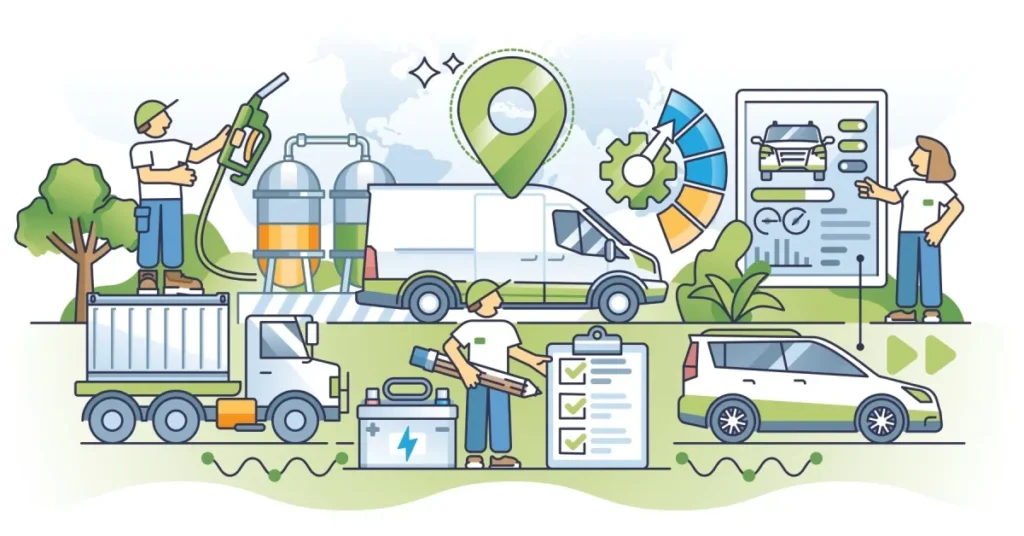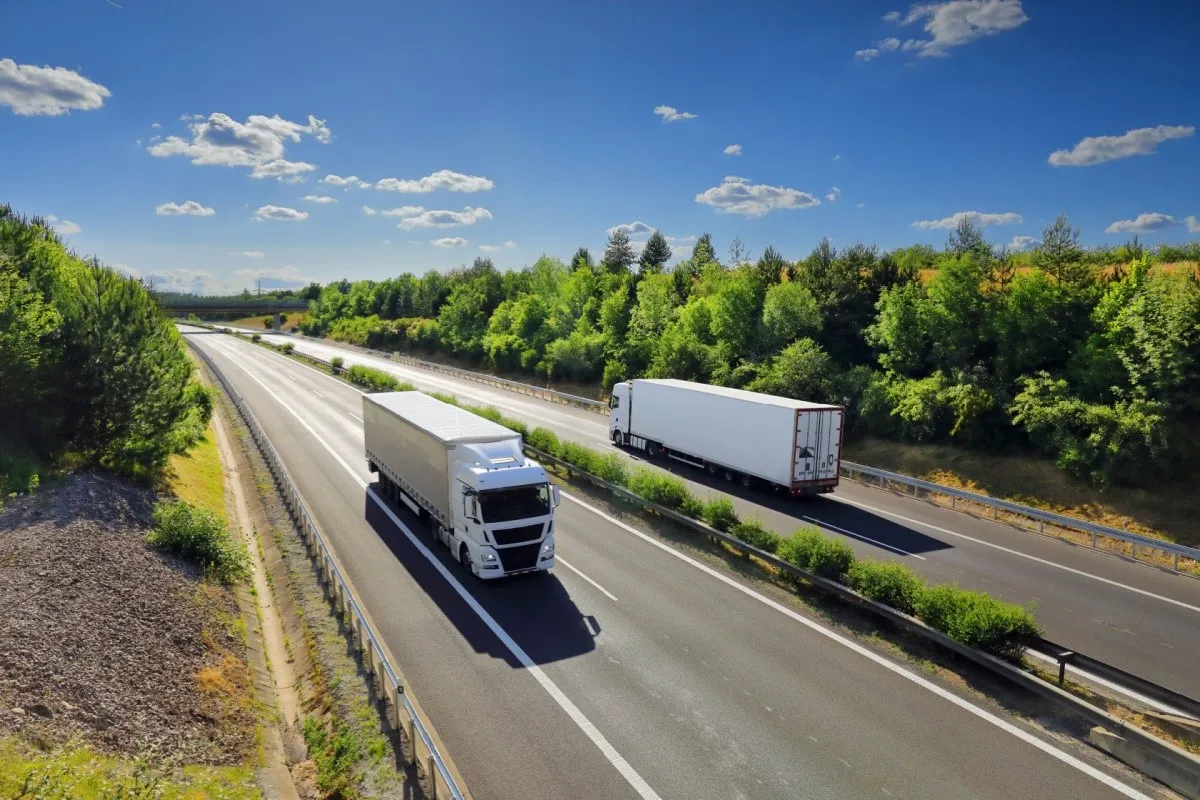Table Of Contents
- 1 Step 1: Decide on Your Trucking Company Type
- 2 Types of Trucking Companies:
- 3 Types of Freight to Haul:
- 4 Service Area:
- 5 Step 2: Construct a Business Plan
- 6 Step 3: Register Your Business and Obtain Licenses
- 7 Step 4: Secure Necessary Permits and Licensing
- 8 If Operating Interstate:
- 9 If Operating Intrastate:
- 10 Step 5: Understand Tax and Compliance Requirements
- 11 Tax Considerations:
- 12 Compliance Requirements:
- 13 Step 6: Secure Startup Funding
- 14 Step 7: Acquire Equipment
- 15 Step 8: Hire and Train Staff
- 16 Step 9: Implement a Fleet Management System
- 17 Step 10: Market Your Trucking Business
- 18 Conclusion
Starting a trucking company can be a lucrative and rewarding business venture, but the road to success
requires careful planning and execution. Whether you’re an experienced driver looking to become an
owner-operator or an entrepreneur entering the logistics industry, following a structured approach will
help you navigate the complexities of registration, compliance, and operations. This step-by-step guide
will walk you through everything you need to know to launch and grow your trucking company
successfully.
Step 1: Decide on Your Trucking Company Type
Before diving into the logistics, determine what type of trucking company you want to operate.
Types of Trucking Companies:
- Owner-Operator: You own and operate your truck.
- For-Hire Carrier: You transport freight for various customers.
- Private Fleet: You transport goods exclusively for your own company.
Types of Freight to Haul:
- Dry Van Trucking: General freight in enclosed trailers.
- Refrigerated Trucking: Temperature-sensitive goods.
- Flatbed Trucking: Oversized and heavy goods.
- Tanker Trucking: Liquids and gases.
- Intermodal Trucking: Freight containers moved between ships, trains, and trucks.
- Specialized/Niche Cargo Hauling: Hazardous materials or specialized equipment.

Service Area:
- Local Trucking: Short-distance deliveries within a city or state.
- Regional Trucking: Multi-state routes.
- Long-Haul/Over-the-Road Trucking: Nationwide or international operations.
Step 2: Construct a Business Plan
A well-structured business plan will guide your trucking company’s growth and help secure funding. Key
components include:
- Business structure: Sole proprietorship, LLC (preferred), or Corporation.
- Target market: Define your customer base and competitive advantage.
- Startup costs and financial projections: Include truck purchases, permits, insurance, and maintenance.
- Operational plan: Route planning, staffing, and fleet management.
- Marketing strategy: How you’ll attract and retain clients.
Step 3: Register Your Business and Obtain Licenses
Proper registration and licensing are essential for legal operation. Steps include:
- Obtain an EIN: Free from the IRS; allows you to open a business bank account.
- Register your business entity: LLC or Corporation for liability protection.
- Trademark your business name: To establish brand identity.

Step 4: Secure Necessary Permits and Licensing
If Operating Interstate:
- DOT and MC Number: Apply through the FMCSA.
- Unified Carrier Registration (UCR): Mandatory for interstate carriers. (file with us)
- BOC-3 Filing: Assigns a process agent for legal documentation. (file with us)
- Commercial Truck Insurance: Costs vary based on factors like history and vehicle type.
- State Permits: Verify state-specific requirements.
- New Entrant Audit Registration: Compliance with FMCSA standards.
If Operating Intrastate:
- DOT Number: Required for state-level registration.
- State-Specific Permits: Vary by state.
- 2290 HVUT Tax: Required for trucks over 55,000 lbs.
Step 5: Understand Tax and Compliance Requirements
Tax Considerations:
- HVUT (2290 Form): Annual tax for heavy vehicles over 55,000 lbs.
- International Fuel Tax Agreement (IFTA) Decals: Required for multi-state operations.
- International Registration Plan (IRP): Apportioned license plates for interstate carriers.
Compliance Requirements:
- Driver Requirements:
- CDL (Commercial Driver’s License)
- FMCSA Clearinghouse registration
- Medical card
- Random drug testing enrollment
- Truck Requirements:
- Electronic Logging Device (ELD)
- Annual DOT inspections
- Proper registrations and permits
- Authority Compliance:
- IRP Registration
- Trailer registration
- MC90 Insurance
- Paper logs for backups
Step 6: Secure Startup Funding
Starting a trucking company requires significant upfront investment. Options include:
- Business loans: Banks and credit unions.
- Equipment financing: Leasing or purchasing trucks.
- Grants and government programs: Available for small businesses.
Step 7: Acquire Equipment
Decide whether to buy or lease your trucks based on your budget and long-term goals. Consider:
- New vs. Used Trucks: New trucks offer reliability, while used trucks are cost-effective.
- Leasing vs. Purchasing: Leasing reduces upfront costs but may be more expensive over time.
Step 8: Hire and Train Staff
If expanding beyond an owner-operator model, you’ll need:
- Qualified drivers with CDL licenses.
- Dispatchers for load management.
- Mechanics for truck maintenance.
- Accountants or bookkeeping services for tax compliance.
Step 9: Implement a Fleet Management System
A fleet management system helps monitor fuel costs, maintenance, and compliance. Key features include

- GPS tracking for route optimization.
- Maintenance scheduling for reduced downtime.
- Fuel efficiency monitoring.
Step 10: Market Your Trucking Business
Building a strong customer base is crucial for long-term success. Strategies include:
- Networking with shippers and brokers.
- Joining load boards to find freight.
- Creating a professional website and social media presence.
- Registering with the Standard Carrier Alpha Code (SCAC) for credibility.
Conclusion
Starting a trucking company involves multiple steps, from structuring your business and securing permits
to acquiring trucks and marketing your services. By carefully planning each stage, you can build a
successful and legally compliant trucking company. With the right approach, you’ll be well on your way
to establishing a profitable and sustainable trucking business. Happy trucking!

